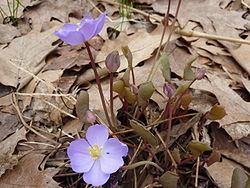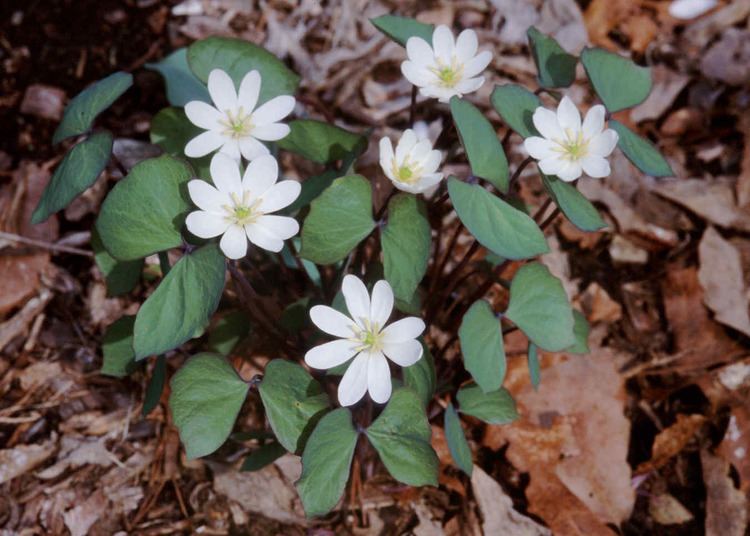Scientific name Jeffersonia Rank Genus | ||
Similar Plagiorhegma dubium, Kirengeshoma, Berberidaceae, Podophyllum, Dodecatheon | ||
Twinleaf jeffersonia diphylla
Jeffersonia which is also known as twinleaf or rheumatism root, is a small genus of herbaceous perennial plants in the family Berberidaceae. They are uncommon spring wildflowers, which grow in limestone soils of rich deciduous forests. Jeffersonia was named for United States President Thomas Jefferson, by his contemporary Benjamin Smith Barton. This genus was formerly grouped in genus Podophyllum. Twinleaf is protected by state laws as a threatened or endangered plant in Georgia, Iowa, New York, and New Jersey.
Contents

Twinleaf jeffersonia diphylla
Description
The leaves and flowers of this plant are smooth and emerge directly from the rhizome at base of the plant. Jeffersonia has showy white flowers with eight petals; the flower resembles Bloodroot. The short-lived flower appears in April or May, before the forest canopy appears (see spring emphemeral). The fruit is a green pear-shaped capsule with a hinged top. The characteristic leaves are large and nearly divided in half, giving rise to its common name, twinleaf. Plants in this genus rarely grow taller than 12 inches (30 cm). As with many other deciduous forest plants, the seeds are dispersed by ants, a process known as myrmecochory.
Species

In 1800, Brickell used the name Jeffersonia to refer to some plants in the Loganiaceae, thus creating an illegitimate homonym. Species names coined using this illegitimate use of the name:
Uses

Jeffersonia has had a variety of medical uses throughout history. One of those uses is hinted at by an archaic common name of Jeffersonia diphylla, Rheumatism root. The "roots" of both species contain berberine, a known anti-tumor alkaloid. The plant is therefore considered poisonous.
America
Native Americans utilize Jeffersonia diphylla for a variety of medicines.

The Cherokee use an infusion of this plant for treating dropsy, as well as gravel and urinary tract problems, as well as using it as a poultice for sores and inflammation.
The Iroquois used a decoction of the plant to treat gall and diarrhea.
The whole plant was used in early American medicine as an antispasmodic, diuretic, emetic, expectorant and general tonic. The "root" was once also used as an emetic in large doses, and as an expectorant in small doses. Modern medicine does not currently utilize this plant.
China
Traditional Chinese medicine uses Jeffersonia dubia for strengthening the stomach and bringing down fevers.
